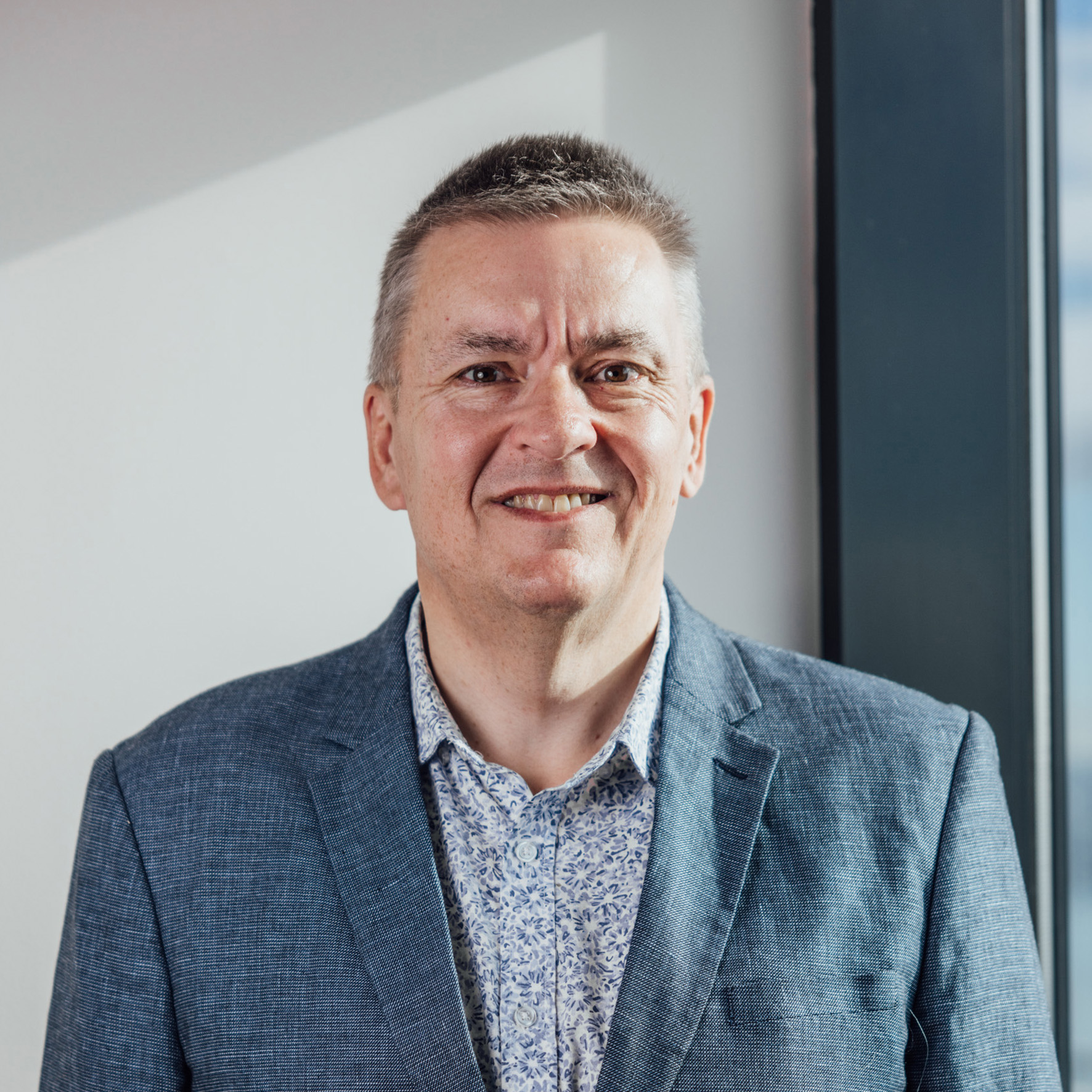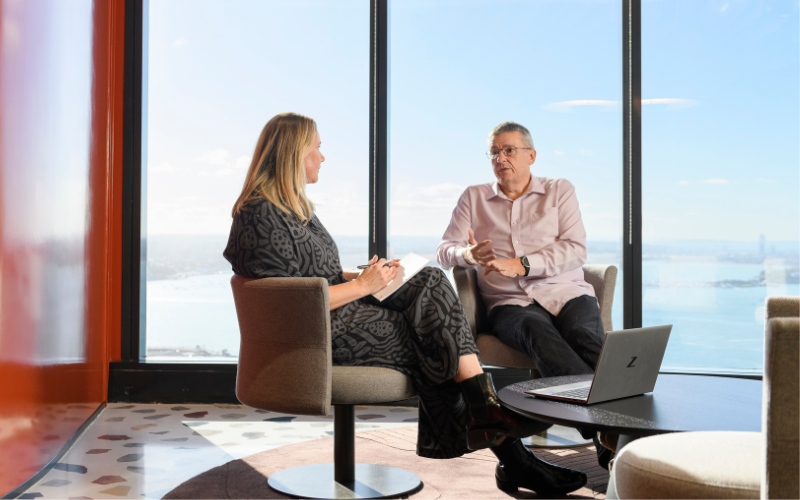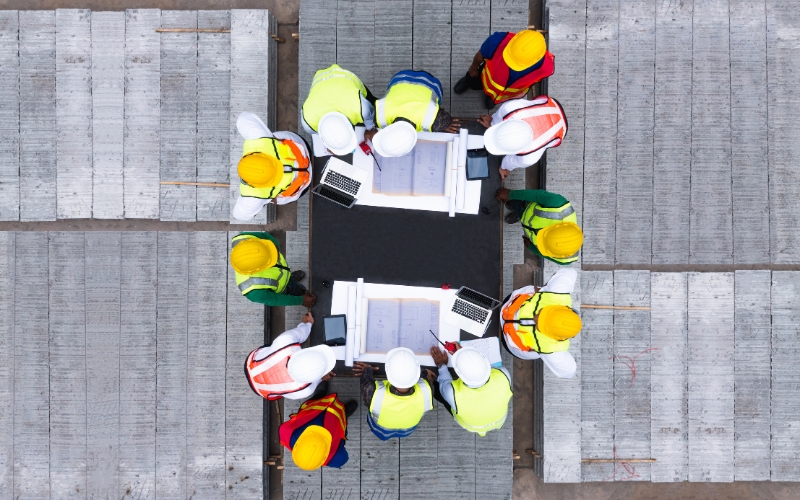Can New Zealand move from a focus of health and safety compliance to better work practices?

The Health and Safety at Work Act has now been in force for over four years.
Grant Nicholson and WorkSafe’s CEO, Phil Parkes look at the Act’s impact and WorkSafe’s focus in the years to come.
The Health and Safety at Work Act has now been in force for four years, so how do you think has it changed work in New Zealand’s workplaces?
It has certainly raised the profile of health and safety across the economy. But that profile is not consistently translating into improved system performance. We are still harming far too many of our workers. Although we have an improved underpinning legislative base, and there have been incremental improvements, progress on improved health and safety performance has stalled and we risk going backwards.
Too many businesses still approach health and safety as an obligation - a way of keeping WorkSafe out of their workplaces – the compliance focus. WorkSafe will continue to hold defaulters to account – it’s a core role and we’re the only organisation that can do it, but we need to change the conversations from just about ‘health and safety’ to ‘how work is done’. Businesses, workers and the regulator must focus on changing how work is planned, organised and carried out, not just on ‘managing health and safety’. This includes innovating in how we do things, focusing on and learning from what goes right and thinking about how everyone can work together to find better ways of doing work. At WorkSafe, we’re making changes internally to help us focus our activities more effectively, using the information and intelligence available to us. But for all of us, committed, active leadership across the health and safety system is critical if we are to make the changes to create better workplaces where organisations flourish and workers thrive.
The Health and Safety at Work Act has now been in force for four years, so how do you think it has changed work in New Zealand’s workplaces?
It has certainly raised the profile of health and safety across the economy. But that profile is not consistently translating into improved system performance. We are still harming far too many of our workers. Although we have an improved underpinning legislative base, and there have been incremental improvements, progress on improved health and safety performance has stalled and we risk going backwards.
Too many businesses still approach health and safety as an obligation - a way of keeping WorkSafe out of their workplaces – the compliance focus. WorkSafe will continue to hold defaulters to account – it’s a core role and we’re the only organisation that can do it, but we need to change the conversations from just about ‘health and safety’ to ‘how work is done’. Businesses, workers and the regulator must focus on changing how work is planned, organised and carried out, not just on ‘managing health and safety’. This includes innovating in how we do things, focusing on and learning from what goes right and thinking about how everyone can work together to find better ways of doing work.
At WorkSafe, we’re making changes internally to help us focus our activities more effectively, using the information and intelligence available to us. But for all of us, committed, active leadership across the health and safety system is critical if we are to make the changes to create better workplaces where organisations flourish and workers thrive.
What mistakes do WorkSafe still commonly see businesses making, and what is the single most important thing people should implement to do better?
We know that very few businesses and workers in New Zealand are ‘mature’ from a health and safety perspective. In every business, no matter its maturity level, it is vital to have conversations about critical risks (which will differ from workplace to workplace) and to ensure effective controls are in place to protect workers from them.
That said, making a list and picking one or a few obvious problems reinforces the traditional health and safety approach that has delivered incremental improvements to date. In addition to this, businesses, in close partnership with their workers and unions, need to focus on what is going right in their workplaces and applying the principles that support good work into the whole of their operations. Ultimately this requires a change of mind set and culture, to think and raise questions about what happens at work, and how better outcomes can be achieved. We know that if work is properly set up and work practice is carried out well, then the number of health and safety incidents will come down.
The COVID pandemic highlighted the threat of a virus as a health and safety concern. What other health and wellbeing concerns remain under exposed in New Zealand?
New Zealanders are up to 15 times more likely to die of a work related health exposure than from an acute workplace incident. That’s unacceptable to have between 750-900 people dying from health related exposures at work each year. WorkSafe is fast building its capability and capacity in this area to help drive the necessary improvements.
We know where the biggest areas of harm arise – firstly musculoskeletal issues and following in order, mental ill health, cancers, respiratory issues, hearing loss and cardiovascular disease – so we have the insights. Now we’re building the interventions to address the issues.
So over the next year or so you will notice WorkSafe talking more about the impacts of work on health and wellbeing at engagements we attend. There will also be more guidance and education that is pertinent to health and wellbeing, as well as assessment visits that take a more active interest in the impact of work on workers’ health. I also see the opportunity to consider some more innovative functions to respond to health and wellbeing issues in the workplace. For example, we have begun considering restorative practice as a tool to use to ensure mentally healthy work.
With more and more people opting to work flexibly from home, what suggestions does WorkSafe have to ensure workers’ home working environments are safe?
Think of your employees’ homes as another branch of your business. Just as you’d set up a new office to ensure your staff are productive, healthy and safe, so you need to work with your people to ensure their home working environments are too. Be flexible too about allowing work from home. At WorkSafe our first question is: Why couldn’t a person work from home in their role? It’s an enabling approach and it builds a trusting and productive relationship.
What is on the horizon for WorkSafe as you look to the future of health and safety in New Zealand?
We need to change New Zealand’s focus from health and safety to better work and WorkSafe has to change along with everyone else. I’ve launched an internal programme that aligns all our work onto this path and I’m rolling that out around the country. There are basic drivers – we have to weave every strand of our work into a single focus; we have to be insights-led; if what we’re doing is not making a measurable difference to performance (ours and the health and safety environment generally), then we’ve got to stop and do something that is. This work will ensure we’re focused on influencing the way work is done – better work, not just health and safety.
Commentary by Grant Nicholson, Partner
It is hard to move workplaces from a compliance mind-set to one where good health and safety is an embedded value and management and staff work collaboratively together to manage risks. Clients tell us they get the best results by focusing on the things that matter (what Phil correctly calls critical risks) and by being proactive around new workplaces, plant and practices. We also know that workplaces who prioritise engaging with staff about health and safety issues and getting them involved in health and safety decision making generally perform better, as staff understand how the way they work directly impacts their health and safety.
The idea of highlighting ‘what goes right’ is useful for mature organisations, but we have concerns about it in organisations where good health and safety is less embedded, as there are plenty of deficient (but lucky) organisations out there. If an organisation isn’t sure whether it is lucky or good, it’s probably time to ask some hard questions and get some external assistance to verify what is happening and ensure the management of operational risk and the governance of the organisation have both got the best information and settings.
About Phil Parkes
Phil Parkes is the Chief Executive of WorkSafe New Zealand, taking up the role in 2020. Phil has held several leadership positions at WorkSafe since 2014. He brings extensive regulatory and leadership experiences from previous roles in local and central government in New Zealand and the UK. For more information on WorkSafe, click here.
Disclaimer: The material contained in this document is provided only as an information source, and is correct at the time of writing. The material is a generalised summary of the key issues and is not intended as a substitute for specific professional advice and should not be relied on for such a purpose. Independent professional advice should be obtained before relying on any aspect of this material and we would be happy to assist in this regard.




